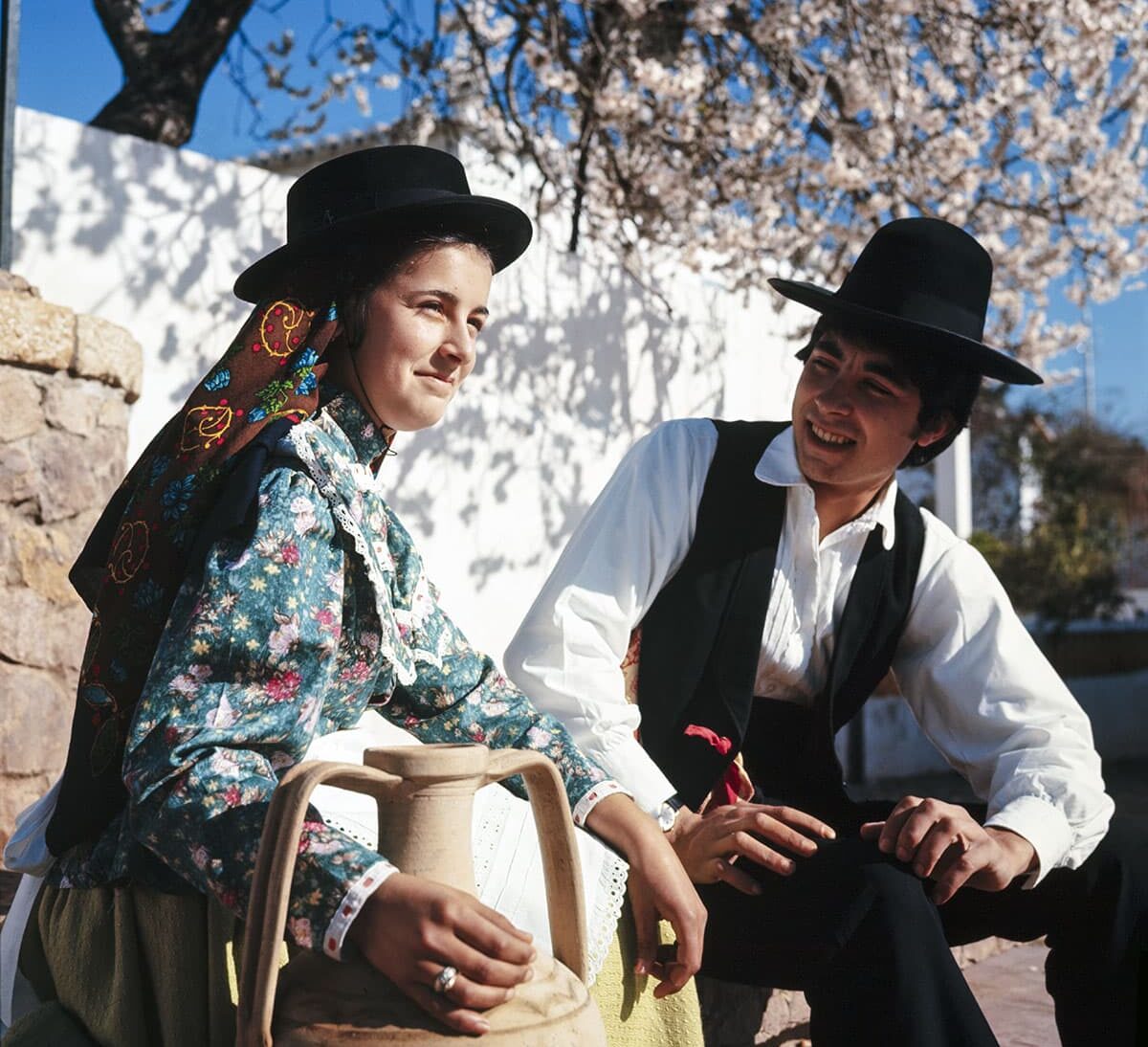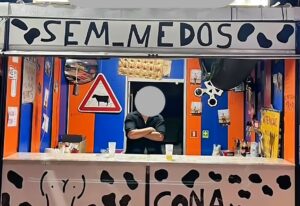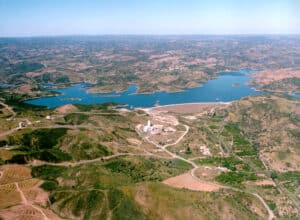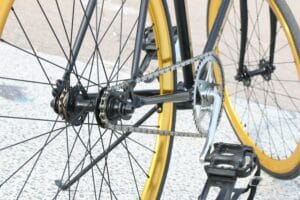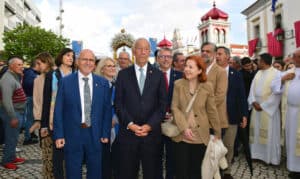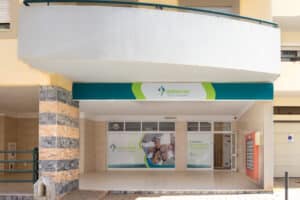Asta and Luís de Almeida d’Eça became renowned for their promotional photographs of the Algarve from the 1960s and 1970s. They crafted the image of the Algarve as a tourism destination as we (still) know it today.
An exhibition showcasing several works by the first professional photographers who portraited the Algarve as a tourist destination is on display in Ferragudo until Friday, August 16.

Since 2019, University of Algarve (UAlg) professor and photography researcher Nuno de Santos Loureiro has been delving into the archives of a couple, Asta and Luís de Almeida d’Eça, whose photos focused exclusively on promoting the Algarve as a new and attractive tourism destination at a time when tourism was still in its infancy in the region.
After a long selection process, the exhibition entitled ‘As Praias e o Povo – Asta e Luís de Almeida d’Eça’ (The Beaches and the People – Asta and Luís de Almeida d’Eça) was unveiled at the Casa do Real Compromisso Marítimo in Ferragudo, where it can be visited every day from 4pm to 8pm.

“They were the ones who first photographed the Algarve specifically for tourism promotion, taking photos of beaches, the sea, fishermen, folk groups, and blooming almond trees. All these scenes, that we still recognise today, were created by them. Obviously, later on, other photographers followed in their footsteps. But they are the pioneers,” Nuno de Santos Loureiro told Barlavento newspaper.
As he explains, the couple’s work focuses on a transitional period when the Algarve’s beaches – up until then used mainly for fishing – were starting to be used for bathing: “They captured and helped carry out this transition,” he says.

Loureiro believes that the couple’s interest in the Algarve was related to their contracts with national airline TAP, which at the time was working hard to establish Portugal’s image as an attractive holiday destination, and with the SNI – National Information Secretariat, a department of the Salazar’s regime that aimed to promote Portugal’s burgeoning tourism sector.
“Anyone who looks at the collection of their photographs that were used in TAP posters and later by the Algarve tourism posters, will see that these images are still in our imagination when we think of the Algarve: the chimney, the almond tree, the paradise beaches, the fisherman, the donkey,” he explains.

“They liked the Algarve so much that they bought a house in Armação de Pêra,” the researcher says, adding that the couple were at the forefront of the golden years of the Algarve’s growing tourism sector between 1960 and 1970.
The researcher’s interest in the couple started when he learned of an 11-edition multilingual book series ‘Algarve, Portugal. Holidays in All Seasons of the Year’, published by the couple between 1969 and 1987.

He then learned that the Polytechnic Institute of Tomar acquired, in 2011, the couple’s vast photographic archive from Asta Almeida d’Eça, comprising about 50,000 colour slides in 6×6 cm format.
In 2018, after the creation of CEFT – Centre for Photography Studies in Tomar, the whole set was preserved there, and is now known as the ‘Almeida d’Eça Collection’.

This archive is at the basis of the exhibition, involving a partnership with UAlg, the municipalities of Lagoa (Algarve) and Tomar, the Polytechnic Institute of Tomar, CEFT, and the Algarve Tourism Region (RTA).
During his first visits to Tomar, Nuno de Santos Loureiro found “a series of cardboard boxes, organised by regions.” He focused on two sets: the TAP set, and the box labelled Algarve.

Selecting 30 photographs for the exhibition “was very challenging because the collection is extremely interesting, rich, and diverse”. In his view, the uncovered photographs can be best described as a “lost and now found treasure”.
“It’s lucky they were bought by the Polytechnic Institute of Tomar. Otherwise, their fate would have been the rubbish bin. It’s fortunate they were preserved in decent conditions for years. The slides are in very good shape,” Loureiro says.

Among the photos he found are some showing old-fashioned charming hotels, others documenting local people at the time, and many depicting carts in the countryside, fishermen sharing beaches with tourists, and also farmers, shepherds, artisans, and souvenir producers.
The researcher believes the couple also had a “voyeuristic” side. “They have numerous photographs of nudists, taken from the perspective of someone peeking from above and seeing the beach below. Between the sand and a rock, there’s a girl sunbathing topless,” he says.

Loureiro’s overarching goal is to publish a book with many other photos. “I want to revisit the entire collection,” he says, admitting, however, that he will have to find partners to fund the edition.
“The Almeida D’Eça couple built a long and successful professional career, but it went largely unrecognised because promotion photographers are often overlooked. However, what remains is not their names, but the work they’ve done,” the researcher laments.

After the Ferragudo exhibition, it will move to Faro, then Lisbon in November, and Porto in January 2025.
“We have an agreement with RTA, and these images will likely be permanently displayed at regional tourist offices,” he adds.

Who were the photographers?
Asta Ella Føge Almeida d’Eça was born in Denmark in 1929, the eldest daughter of a couple of photographers from Aarhus. After working as a photographer in several European countries, she moved to South Africa at the start of the 1950s at the invitation of a businessman linked to Kehlet Foto, with the goal of training new photographers and running their network of commercial establishments. She met her future husband during a holiday in Maputo, Mozambique, in 1954, and the two were wed in 1956.

Luís de Moura Coutinho Almeida d’Eça was born in Mozambique in 1924 and spent part of his youth studying in Lisbon. After holding an important position in the Sena Sugar Estates Lda (sugar production company), Luís Almeida d’Eça moved with his wife to Lisbon where they both focused on photography as their main activity.
Loureiro believes that Asta was likely the main photographer, while Luís run the business. What’s certain is that the couple worked as a team. Apart from their work in the Algarve, the couple also worked for big airlines such as British Airways and South African Airlines, as well as the tourism boards of the Algarve and Cape Verde.

The couple continued to photograph the Algarve until the 1980s. However, after Luís D’Eça died at the start of the 1990s, Asta abandoned photography almost completely. She died in the Algarve in 2015.
For the full photo catalogue, click here.
Original article by BRUNO FILIPE PIRES for Barlavento

